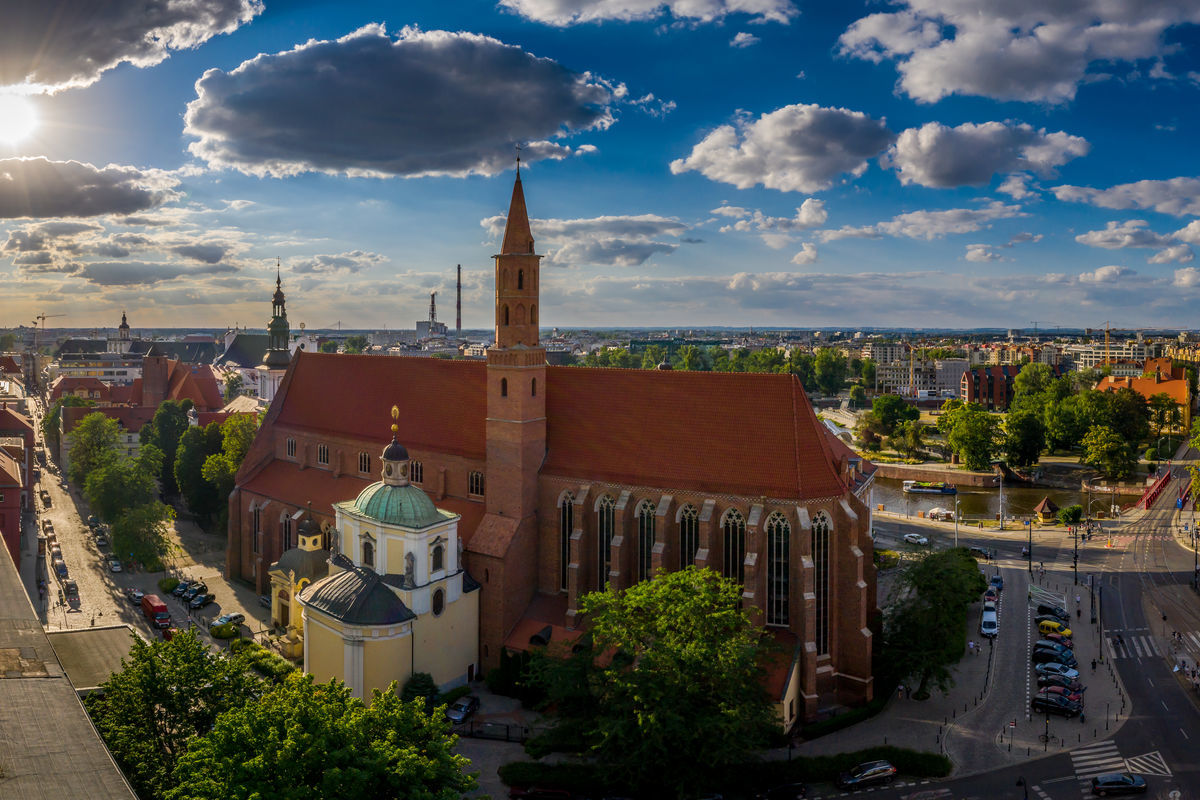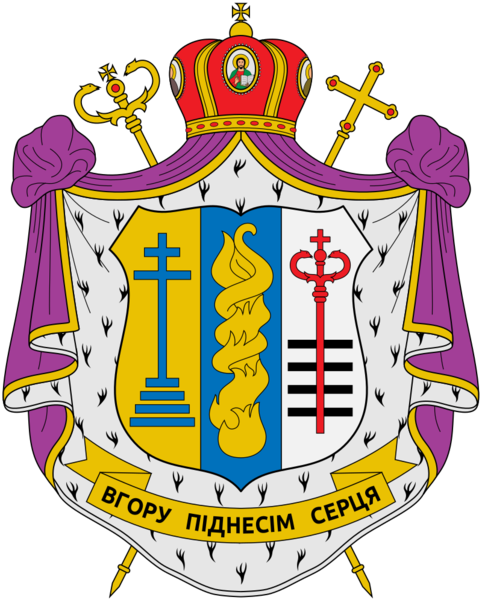Eparchy of Wrocław-Koszalin

About
The Wrocław-Koszaly eparchy is an eparchy of the Ukrainian Greek Catholic Church in Poland. Together with the Przemyśl-Warsaw Archeparchy and the Olsztyn-Gdańsk eparchy, it is part of the Przemyśl-Warsaw Metropolitanate. The eparchy covers the western part of the Republic of Poland, which is located on the left bank of the Vistula River, namely the West Pomeranian, Lubuskie, Wielkopolskie, Lower Silesian, Opole Voivodeships in full, and the Silesian and Kuyavian-Pomeranian Voivodeships in part. Thus, the total area of the Wrocław-Koszały eparchy is about 113,401 km2. The seat of bishop is located in the city of Wroclaw (Lower Silesian Voivodeship, Poland). In terms of geographical location, the Wroclaw-Koszaly eparchy borders the Przemyśl-Warsaw Archeparchy of the UGCC in the east, the Olsztyn-Gdańsk eparchy in the northeast, the Apostolic Exarchate of the Greek Catholic Church in the Czech Republic in the south, and the Apostolic Exarchate for Ukrainian Catholics of the Byzantine rite in Germany and Scandinavian countries — in the west.
 Coat of arms of the eparchy of Wrocław-Koszalin
Coat of arms of the eparchy of Wrocław-Koszalin
For the more effective implementation of pastoral ministry, the Wrocław-Koszały eparchy is divided into seven protopresbyteries:
- Wrocław Deanery (10 parishes: cathedral parish in Wrocław, a parish on Borowski Street in Wrocław, Śróda-Śląska, Oława, Olesnica, Jelcz-Liaskovice, Swidnica, Walbrzych, the city of Yelenya-Gura, the city of Sehnice);
- Zelenohorsk deanery (12 parishes: Zelena Gura, Novogrud-Bobzhansky, Shprotava, Guzice, Przemkuw, Głogów, Gożow-Wielkopolski, Skvezyna, Strzelce-Krajenske, Miendzizhech, Pozzhadlo village, Osetsko city);
- Koshalin Deanery (10 parishes: Koshalin, Slavno, Szczecin, Stargard, Insko, Kolobrzeg, Swidvin, Bilogard, Tshebyatów, Ploty);
- Slupsk deanery (10 parishes: Slupsk, Ustka, Szczecinek, Bobolice, Bily Bir, Belytsia, Miendzybuzh, Barcyno, Myastko, Jevyani);
- Poznań deanery (9 parishes: Poznań, Tarnowo-Podgurne, Walch, Pila, Kalisz, Kempno, Ostrów-Wielykopolski, Bydgoszcz, Inowrocław);
- Katowice Deanery (6 parishes: Katowice, Gliwice, Sosnowiec, Tychy, Częstochowa, Opole);
- Legnica deanery (7 parishes: the city of Legnica, the city of Lubin, the village of Khobenya, the village of Zemenice, the village of Patoka, the city of Boleslavets, the city of Voluv).
Taking into account statistical data from 2020, the territory of the Wrocław-Koszały eparchy has 64 parishes, where 30 eparchial priests and 1 hieromonk perform their pastoral ministry for 25,000 faithful. In addition, one monk and 12 nuns fight on these grounds. First of all, it should be noted that the charitable organization “Caritas” operates in the Wrocław-Koszały eparchy. In addition, the monthly Catholic magazine “Blagovist” is published in the territory of Poland.
Location
Bishop
Since April 24, 1999, the ruling bishop of the Wrocław-Koszały eparchy is His Eminence Bishop Volodymyr Yushchak.
The cathedral of the eparchy of Wrocław-Koszalin is the Cathedral of the Exaltation of the Holy and Life-giving Cross of the Lord, located in the city of Wrocław (Lower Silesian Voivodeship, Poland). In addition, the eparchy has recently established a pro-cathedral cathedral of the Assumption of the Blessed Virgin Mary in Koszalin (West Pomeranian Voivodeship, Poland).
History
In the past times, Ukrainians have been living in the modern eastern parts of Poland. Mainly they were greek-Catholics. Precisely, they lived in Przemysl, Jaroslaw, Rzeszow, Zamość, Chelm, Tomaszow, Lubaczow, Podlachia, and Lemkivshchyna territories. These areas were cared for by the eparchy of Przemysl of the greek-catholic Church. And from 1934, also by the Apostolic Administration of Lemkivshchyna. After WWII the main part of Ukrainians (500 thousand people) was was forcibly deported from their historic lands to Soviet Ukraine. And those 150 thousand people who stayed in Poland were deported by force as part of Operation Vistula to the western and northern lands of Poland in 1947. They were resettled far away from each other, far from the state borders, and left in dilapidated houses abandoned by the Germans. Also, Greek-Catholic Church was prohibited together with education in the Ukrainian language. The intention was to make a full assimilation of Ukrainians during the next 20 years.
Despite being exiled from their homeland, many Ukrainians in the western and northern lands of Poland have not forgotten their native traditions, culture, language, and church. Thus they refused to follow the government’s plans for their full assimilation. Ten years later, in 1957, individual greek catholic priests began to return, operate, and develop new pastorates and parishes. In 1989, after the war, Ivan Martyniak ordinated the first Bishop of the greek-Catholics in Poland. And in 1991, the greek catholic eparchy of Peremyshl was restored. It covered the entire territory of Poland. In 1996, the Metropolis of Przemyśl- Warsaw was formed, which included the Archeparchy of Przemyśl — Warsaw and the eparchy of Wrocław-Idańsk. The Visla River was determined to be the division border.
The eparchy of Wrocław-Gdańsk of the Ukrainian Greek Catholic Church was established by the Apostolic Constitution of the Holy Father John Paul II “Ecclesia Catholica” on May 24, 1996. The first ruling Bishop of the newly formed eparchy became Bishop Teodor Majkowicz who served until his death that happened on May 9, 1998. At that time, Fr. Peter Crick was the Vicar General who today is an Exarch for Ukrainian Catholics in Germany and Scandinavia. After the death of Bishop Teodor, His Eminence Volodymyr Yushchak became his successor who continues his ministry to this day.
From the moment of its creation until recently, the parishes of the Wrocław-Gdańsk eparchy were located mainly in the western and northern parts of Poland as Ukrainians were not sent to the central part of the country.
During the last few years, coming to Poland, a lot of Ukrainians have chosen big industrial cities to study, work and live in. They might settle in those places where there were no Ukrainians before because the latter was deported during Operation Vistula. The Ukrainian Greek-Catholic Church cannot stand aside from this trend. To allow the newly arrived Ukrainians to pray in Ukrainian, in the eastern rite, the Church tries to provide spiritual, moral, and integrational support.
Considering the modern challenges, namely, the need for spiritual care for the workers, the greek catholic bishops of Poland are looking for opportunities to form new pastoral centers in places of the greatest concentration of newcomers. This need is very serious, as the number of Ukrainians is constantly growing. Some statistics show that the total amount of Ukrainian citizens who live, work and study in Poland during the year is about 1.5 million.
Thanks to Bishop Volodymyr Yushchak, the eparchial administration and invited priests from Ukraine, since January 2017, 20 new pastoral centers for the spiritual care of Ukrainian workers and students have existed on the territory of the eparchy of Wrocław-Gdańsk.
Shrines
The eparchy of Wroclaw-Koszalin of the UGCC has a few pilgrimage sites. First of all, the Sanctuary of St. Volodymyr the Great in Gdańsk, Poland. Also, there is a miraculous icon of the Mother of God called the Mother of wanderers in the Church of Nativity of Mary in Biały Bór, Poland. It is important to mention about the formation of the Chapel of All Saints of the Ukrainian People in the Sanctuary of Divine Mercy in Krakow-Lagiewniki.
Contacts
Address: pl. Biskupa Nankiera, 15 a, 50–140 Wrocław, Polska
Phone: +48 (88) 680-88-03
Fax: +48 (71) 343-94-77
Email: [email protected]
Website: cerkiew.net.pl